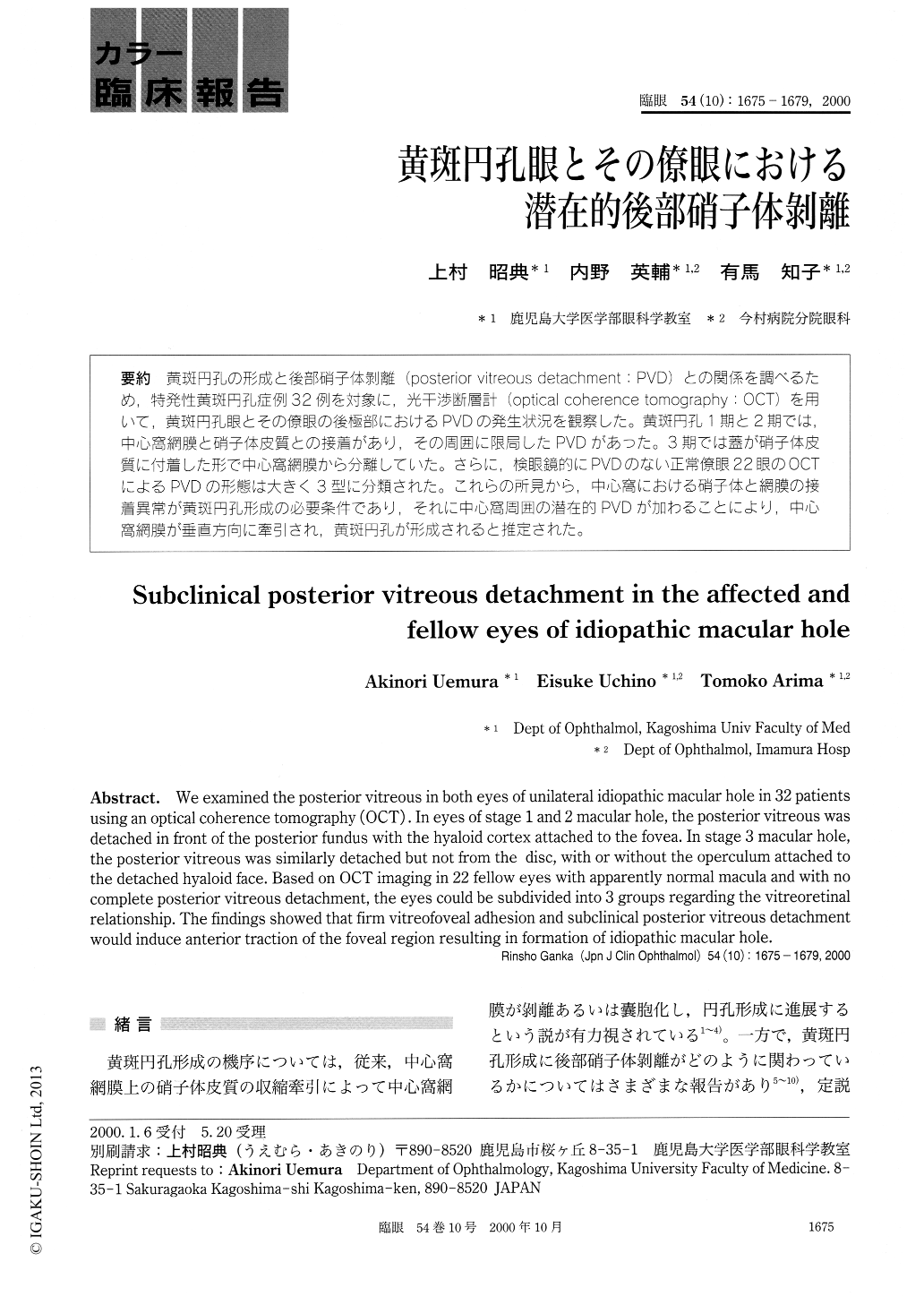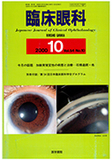Japanese
English
- 有料閲覧
- Abstract 文献概要
- 1ページ目 Look Inside
黄斑円孔の形成と後部硝子体剥離(posterior vitreous detachment:PVD)との関係を調べるため,特発性黄斑円孔症例32例を対象に,光干渉断層計(optical coherence tomography:OCT)を用いて,黄斑円孔眼とその僚眼の後極部におけるPVDの発生状況を観察した。黄斑円孔1期と2期では,中心窩網膜と硝子体皮質との接着があり,その周囲に限局したPVDがあった。3期では蓋が硝子体皮質に付着した形で中心窩網膜から分離していた。さらに,検眼鏡的にPVDのない正常僚眼22眼のOCTによるPVDの形態は大きく3型に分類された。これらの所見から,中心窩における硝子体と網膜の接着異常が黄斑円孔形成の必要条件であり,それに中心窩周囲の潜在的PVDが加わることにより,中心窩網膜が垂直方向に牽引され,黄斑円孔が形成されると推定された。
We examined the posterior vitreous in both eyes of unilateral idiopathic macular hole in 32 patients using an optical coherence tomography (OCT). In eyes of stage 1 and 2 macular hole, the posterior vitreous was detached in front of the posterior fundus with the hyaloid cortex attached to the fovea. In stage 3 macular hole, the posterior vitreous was similarly detached but not from the disc, with or without the operculum attached to the detached hyaloid face. Based on OCT imaging in 22 fellow eyes with apparently normal macula and with no complete posterior vitreous detachment, the eyes could be subdivided into 3 groups regarding the vitreoretinal relationship. The findings showed that firm vitreofoveal adhesion and subclinical posterior vitreous detachment would induce anterior traction of the foveal region resulting in formation of idiopathic macular hole.

Copyright © 2000, Igaku-Shoin Ltd. All rights reserved.


